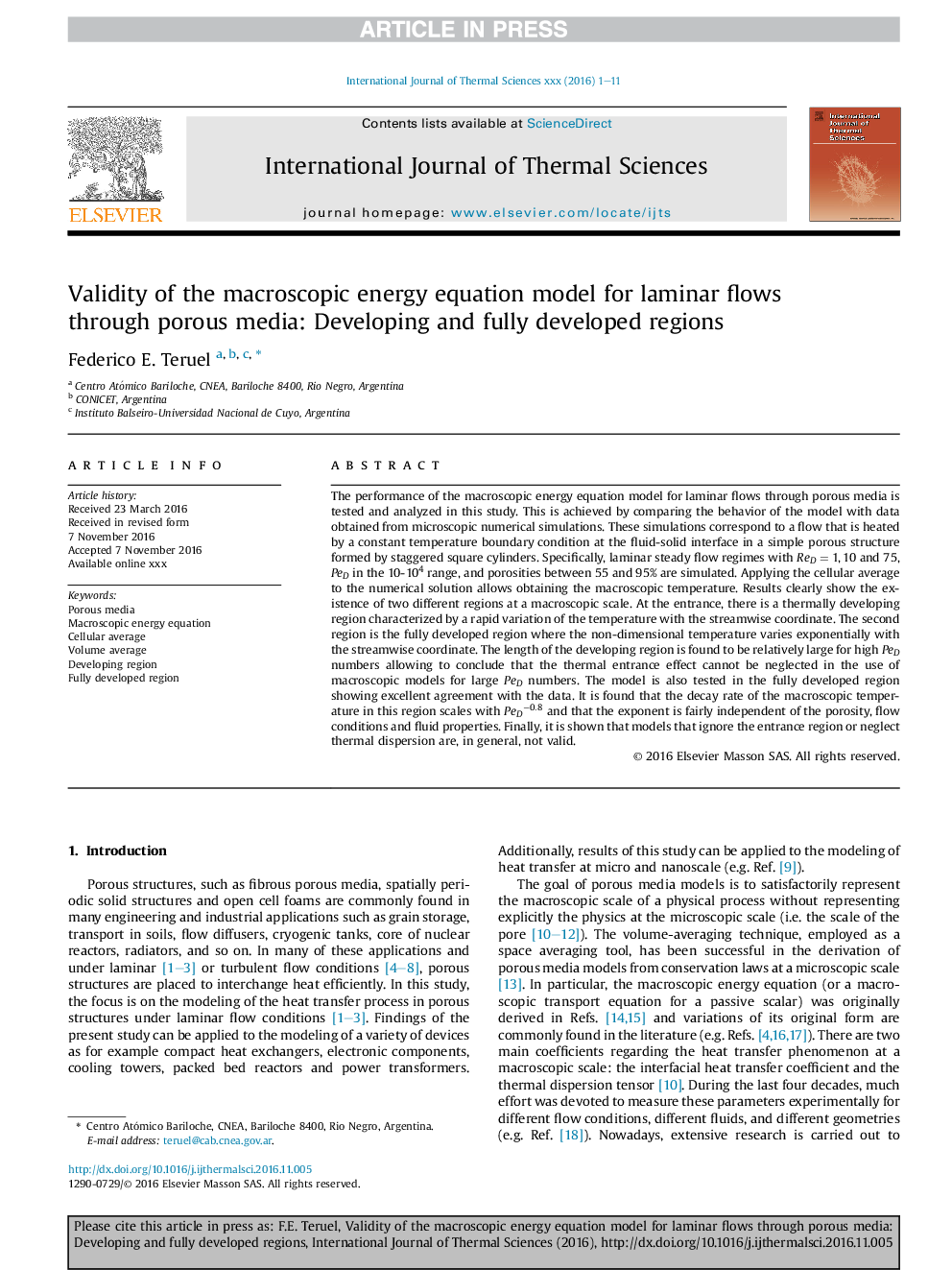| Article ID | Journal | Published Year | Pages | File Type |
|---|---|---|---|---|
| 4995478 | International Journal of Thermal Sciences | 2017 | 11 Pages |
Abstract
The performance of the macroscopic energy equation model for laminar flows through porous media is tested and analyzed in this study. This is achieved by comparing the behavior of the model with data obtained from microscopic numerical simulations. These simulations correspond to a flow that is heated by a constant temperature boundary condition at the fluid-solid interface in a simple porous structure formed by staggered square cylinders. Specifically, laminar steady flow regimes with ReDÂ =Â 1, 10 and 75, PeD in the 10-104 range, and porosities between 55 and 95% are simulated. Applying the cellular average to the numerical solution allows obtaining the macroscopic temperature. Results clearly show the existence of two different regions at a macroscopic scale. At the entrance, there is a thermally developing region characterized by a rapid variation of the temperature with the streamwise coordinate. The second region is the fully developed region where the non-dimensional temperature varies exponentially with the streamwise coordinate. The length of the developing region is found to be relatively large for high PeD numbers allowing to conclude that the thermal entrance effect cannot be neglected in the use of macroscopic models for large PeD numbers. The model is also tested in the fully developed region showing excellent agreement with the data. It is found that the decay rate of the macroscopic temperature in this region scales with PeDâ0.8 and that the exponent is fairly independent of the porosity, flow conditions and fluid properties. Finally, it is shown that models that ignore the entrance region or neglect thermal dispersion are, in general, not valid.
Related Topics
Physical Sciences and Engineering
Chemical Engineering
Fluid Flow and Transfer Processes
Authors
Federico E. Teruel,
